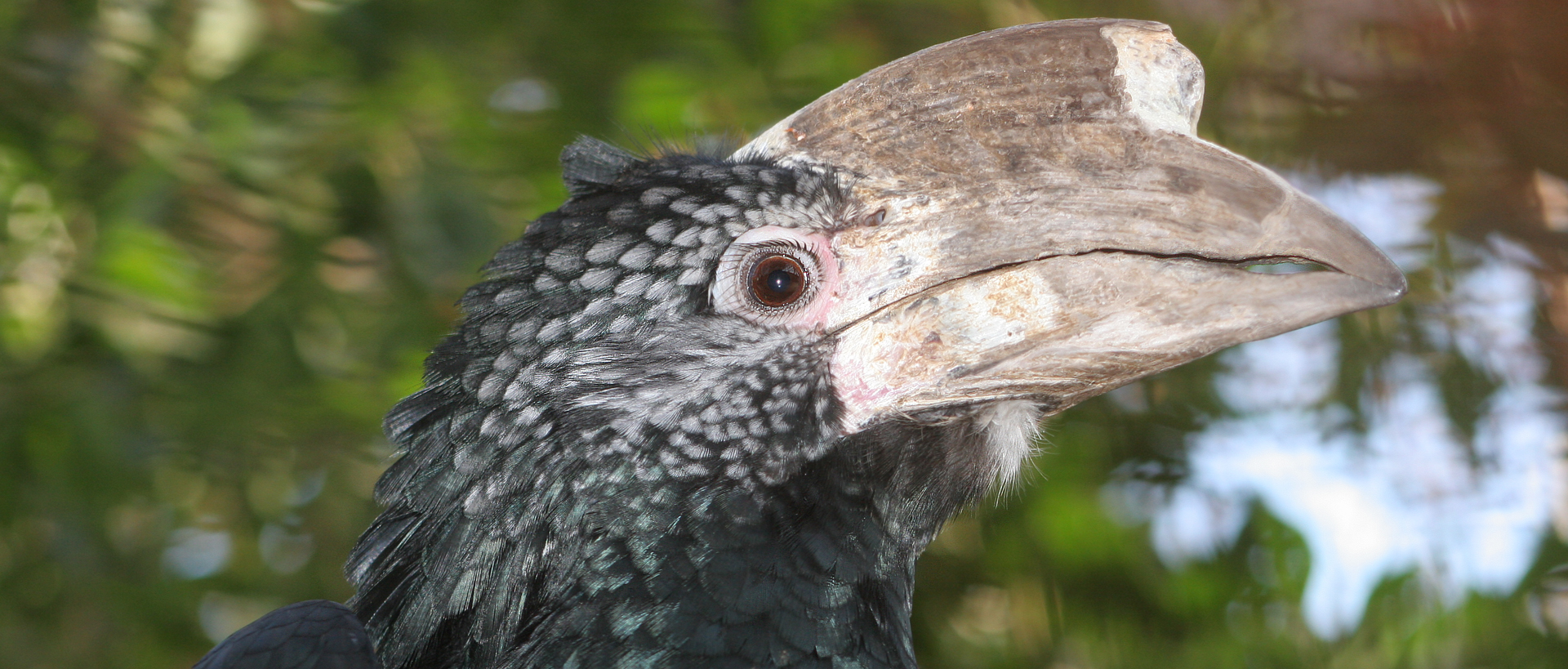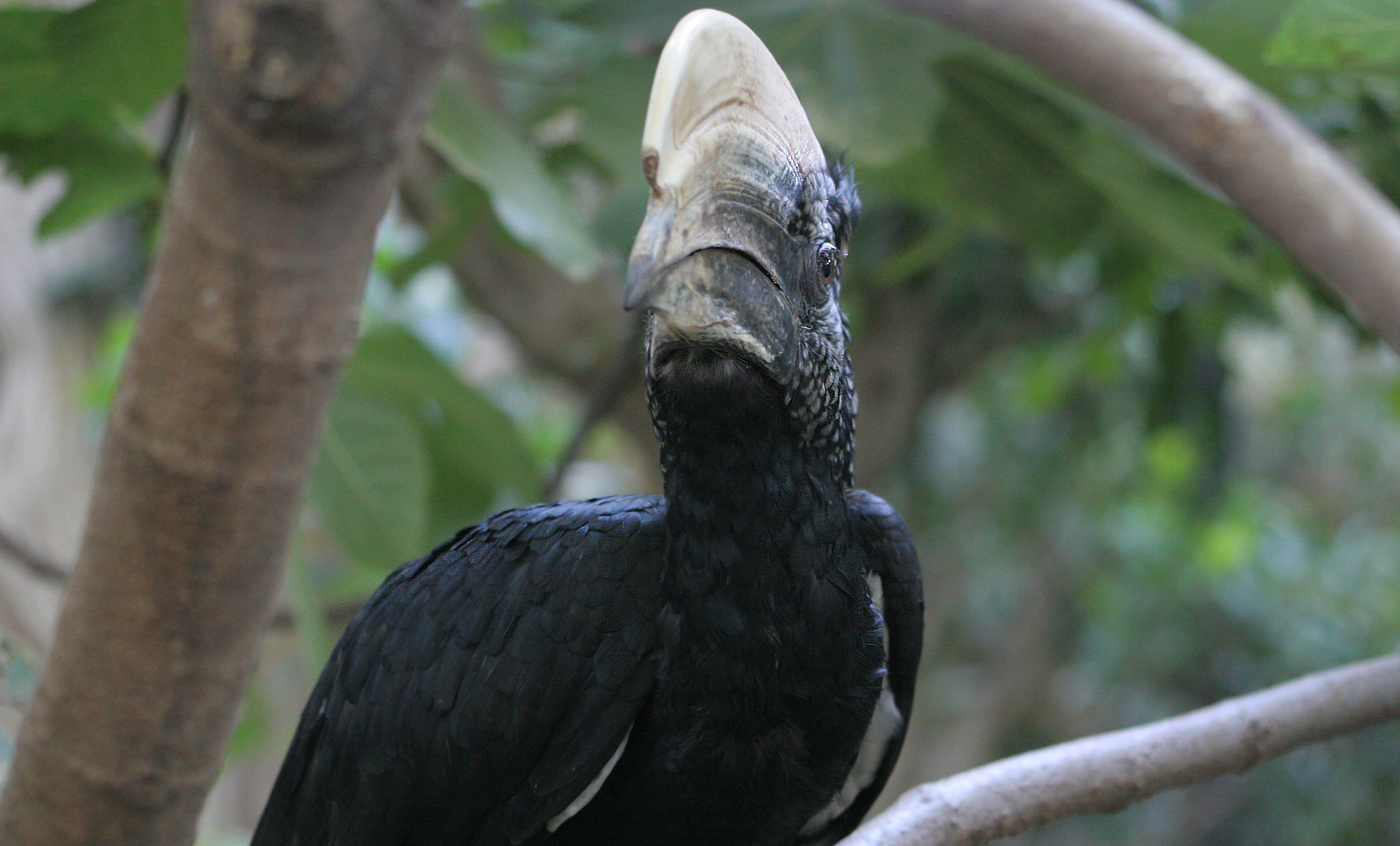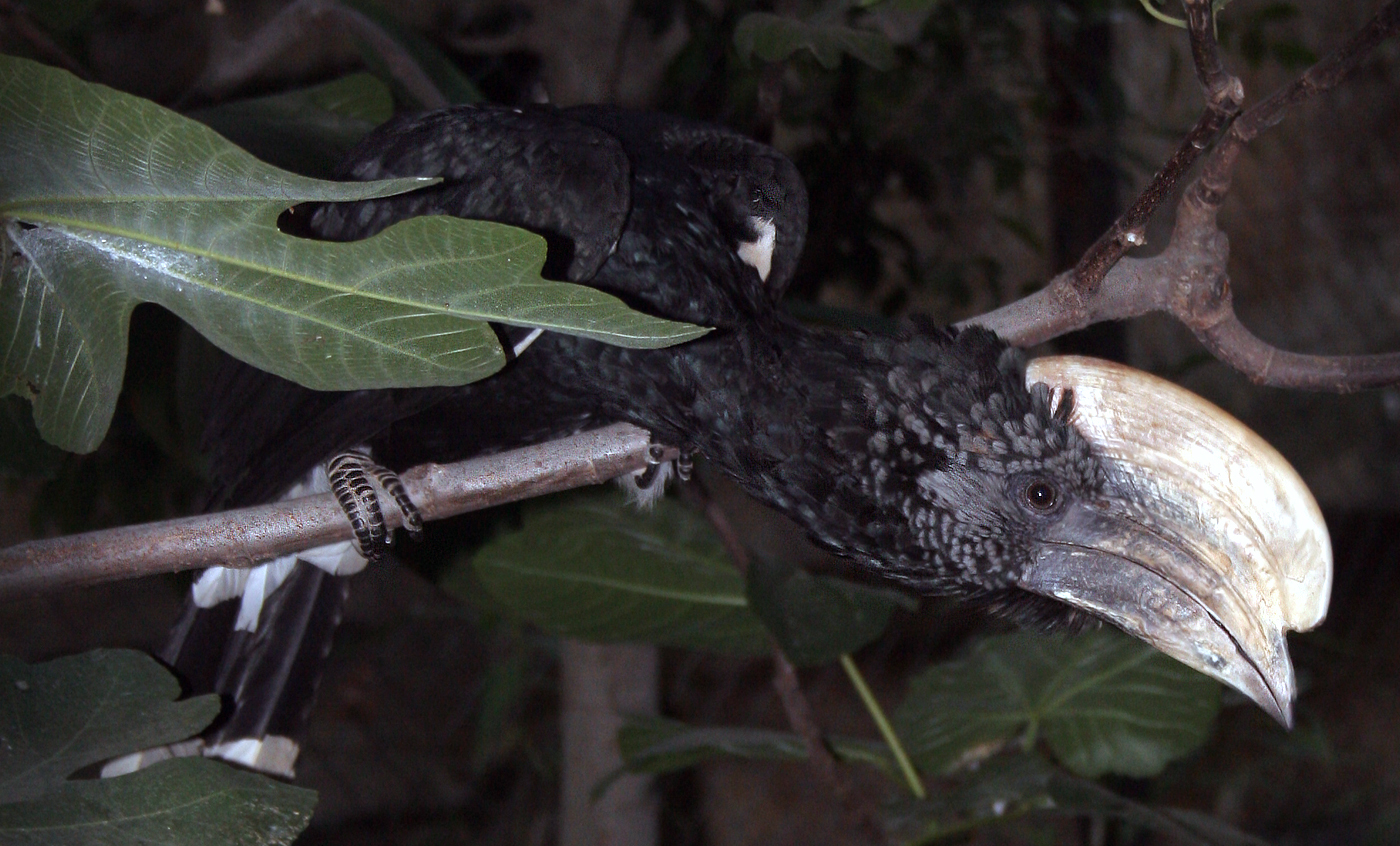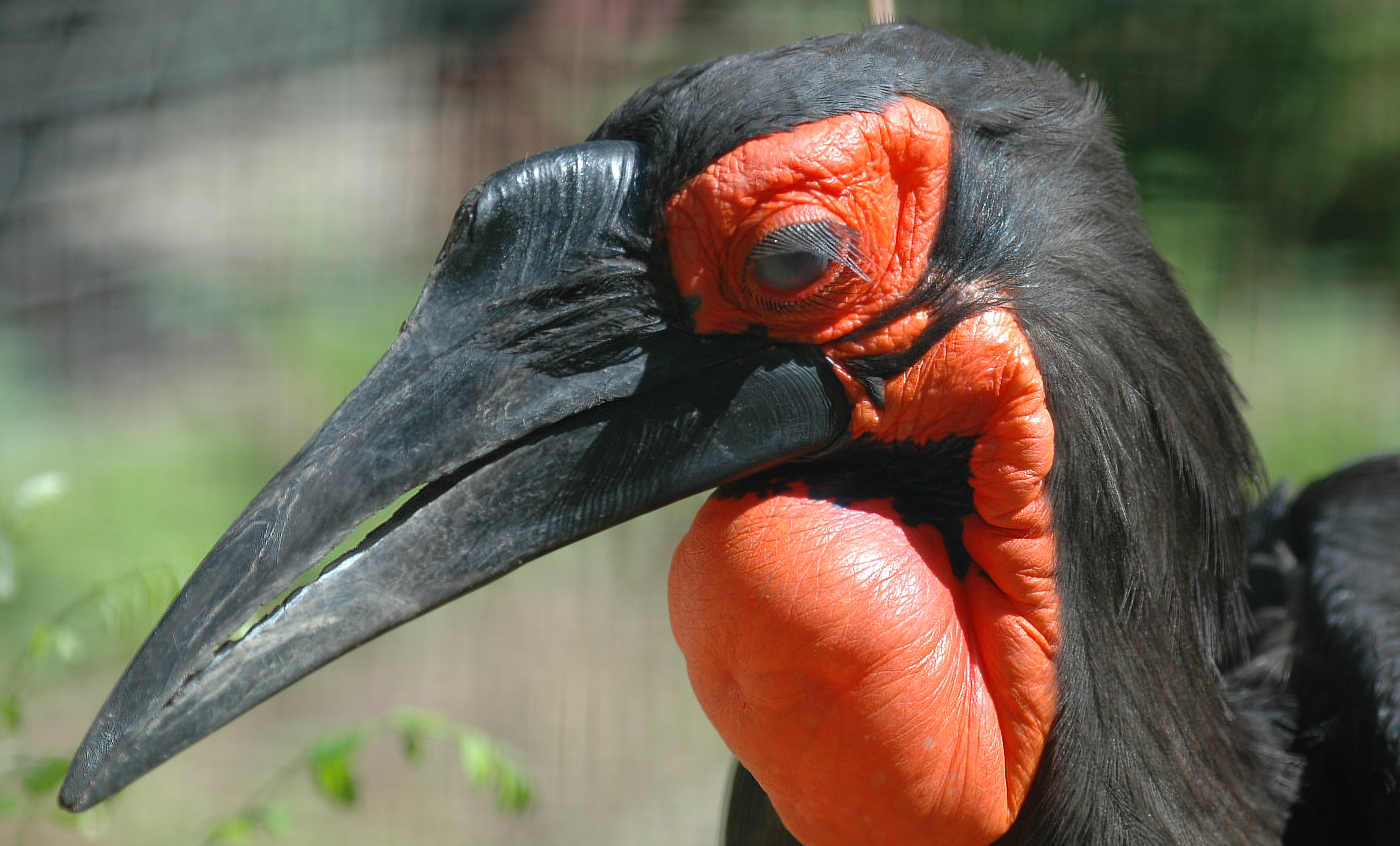Silvery-cheeked hornbill
This species of hornbill inhabits the forests of east Africa, in the area stretching from Ethiopia to Zimbabwe. It lives in small family groups and feeds on fruit, insects, eggs and small vertebrates, such as lizards and small birds.
It is a monogamous species, which nests in holes in trees. The female lays 1 or 2 eggs and remains in the nest during incubation and while she raises the chicks, where she is fed by the male.
This species is common to a large part of its area of distribution.
Natural habit
Jungle highlands of Ethiopia, South Sudan, Kenya, Tanzania, Mozambique and Zimbabwe
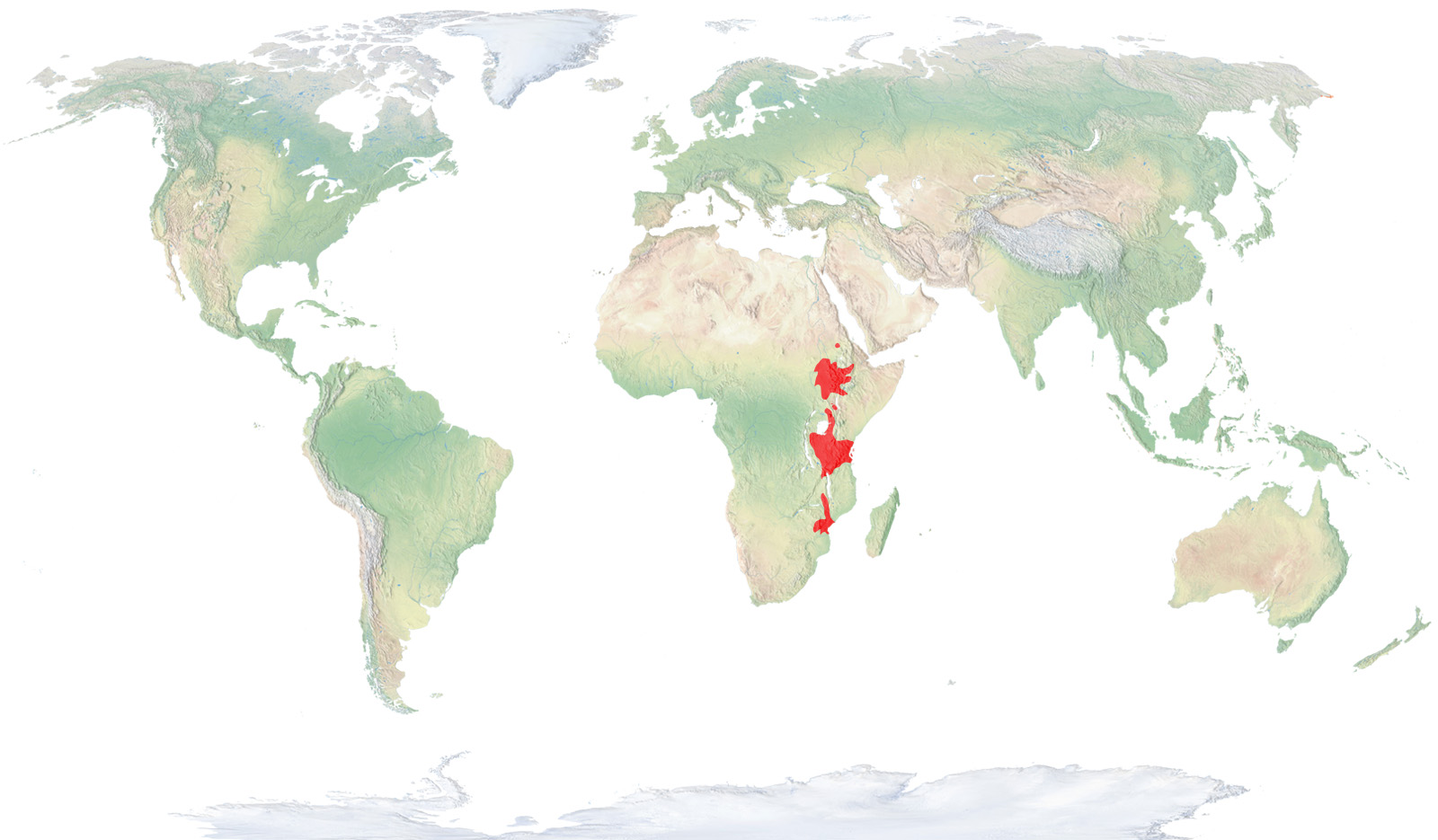
- Distribution / Resident
- Breeding
- Wintering
- Subspecies
Risk level
- Extint
- Extint in the wild
- Critically endangered
- In Danger
- Vulnerable
- Near threatened
- Minor concern
- Insufficient data
- Not evaluated
Taxonomy
Physical characteristics
Biology
Reproduction
Biology
This hornbill has a cream-coloured casque on its bill that is the same length as the bill on males and slightly shorter on females. Its plumage is black, with a white dorsal area, a black head interspersed with silvery feathers that give the bird its name.
It inhabits the forests of eastern Africa ranging from Ethiopia to Zimbabwe.
They live in small family groups and can form extremely large colonies in search of the fruit trees that supply its main food. In addition to fruits, they can also eat insects, eggs and even small vertebrates like lizards and small birds.
Like many hornbills, the species is monogamous, making its nest in holes in trees, where the female lays one or two eggs that are incubated for some 40 days. The male feeds the female, who remains in the nest while the chicks are small. The chicks remain with their parents for some three months.
With the exception of classic food searching movements, which can be quite far reaching at times, it is considered resident in a large part of its area of distribution. However some populations reveal more nomadic habits, especially during the dry season.
This species is still common in a good part of its area of distribution, although some populations have shrunk greatly in recent years due to the deforestation of the jungle.



